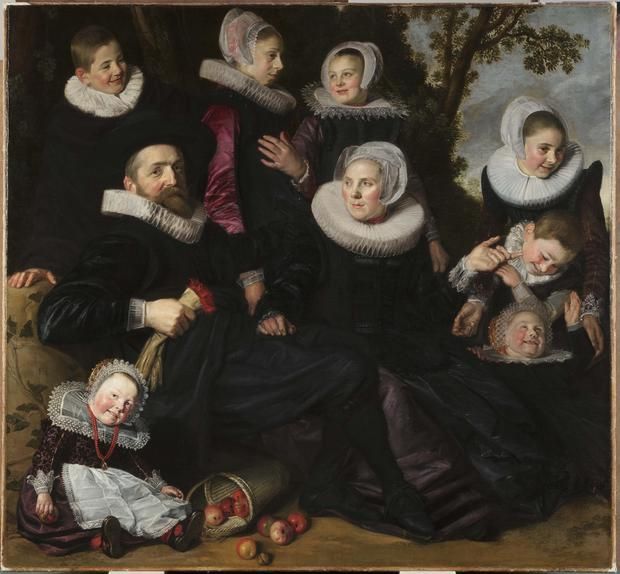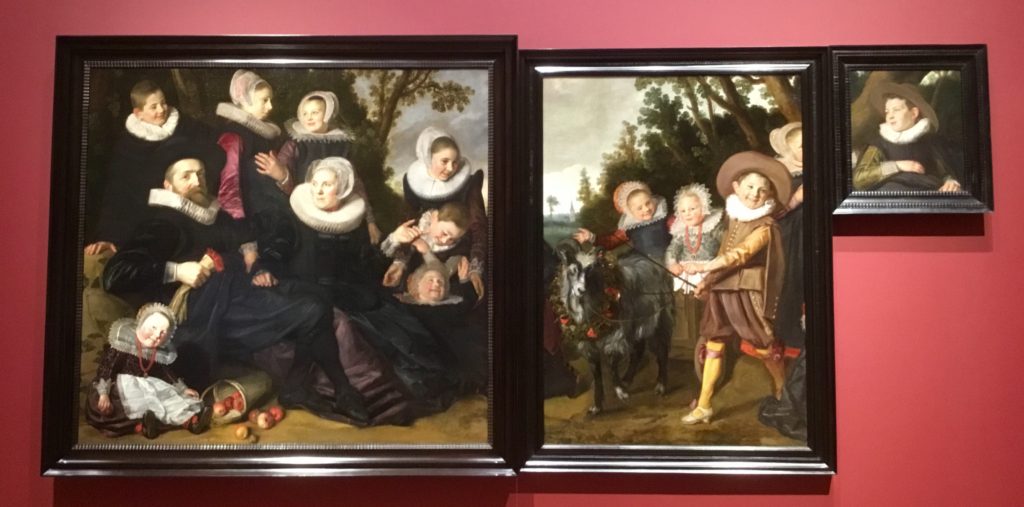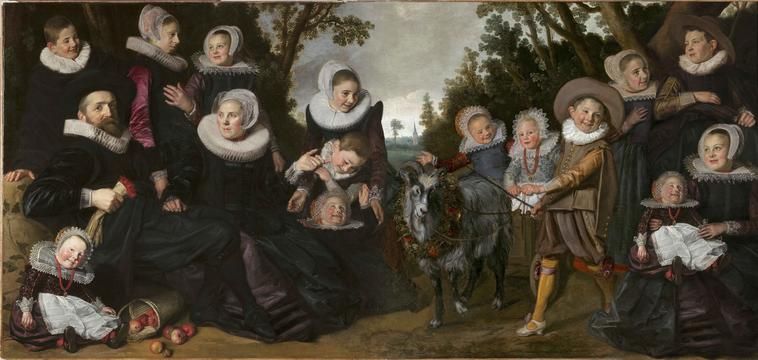 People regularly complain that art criticism displays an off-putting insider-y tone, complete with jargon–but that’s not what I am about to talk about here. I’m going to mention a few display touches and the like that I notice, when they are good, at exhibitions that I review but rarely–for space reasons–have the opportunity to write about.
People regularly complain that art criticism displays an off-putting insider-y tone, complete with jargon–but that’s not what I am about to talk about here. I’m going to mention a few display touches and the like that I notice, when they are good, at exhibitions that I review but rarely–for space reasons–have the opportunity to write about.
The most recent case was at the Toledo Museum of Art, which I visited to see Frans Hals Portraits: A Family Reunion. My review of that exhibit, which reunites three paintings (one purchase by the Toledo museum in 2011, at left) that were split from one canvas by the end of the 18th century, was published in the Oct. 22 issue of The Wall Street Journal. Here are a key paragraphs explaining the show.
Then the discoveries, presented here for the first time, began. Belgian conservators—cleaning their painting for this exhibition—discovered the presence of about half of a girl on the far right of their canvas who had been painted over. Adding to the excitement, her lace collar matched a fragment visible in “Head of a Boy,†cementing his presence as part of this family portrait. Cleaning also revealed two hems on the left of the Belgian work that complete the dresses of two girls on the right of the Toledo painting—leaving no doubt that these paintings were all once part of a whole [see first picture below].
…Hung here so that each work occupies the same place it would have in the intact work, the paintings show the great portraitist at his best. Rather than depict the sitters looking at the viewer—only three of the 14 figures stare out, one being the obviously proud patriarch—Hals creates a lively scene of merry faces, twinkling eyes, and dynamic hand gestures that signal family interactions….he deploys a more controlled style of brushwork than the thick, bold strokes that made many of his portraits famous, but it’s never stilted.
…The three fragments account for 12 children, but what of the other two, both girls? They must have occupied the lost, lower-right corner. In Toledo, a freestanding panel illustrates an educated possibility: a sitting girl with a youngster on her lap [see bottom picture].
Other artworks by Hals and a few others, plus a few Dutch decorative art objects, form the core of this exhibition.
 However, Toledo has also given visitors two other galleries that “wrap” the core–one interrogating the meaning of family with other family-related artworks from the museum’s permanent collection and the other other, a family activity room inviting visitors to reflect on the meaning of family. Both were superfluous for me, but maybe I’m not the target audience.
However, Toledo has also given visitors two other galleries that “wrap” the core–one interrogating the meaning of family with other family-related artworks from the museum’s permanent collection and the other other, a family activity room inviting visitors to reflect on the meaning of family. Both were superfluous for me, but maybe I’m not the target audience.
Further, they didn’t really detract from the core because of those touches I referenced above. Here are some of them:
- The Hals and the other Dutch art was installed in galleries painted a deep red (the beating heart!), picking up small touches in some of Hals’s paintings; while the “wraps” were installed in white galleries.
- As visitors come around a corner from the first “wrap” gallery, they get a glimpse–but just a glimpse– of the reconstructed painting at the center.
- Other, equally appropriate sight lines in the core exhibit.
- There are no didactics on the wall where the reconstructed painting (that is–the three paintings, aligned as one work) hangs.
- A nice long bench sits before the reconstructed painting–for contemplation–with nothing between you and the art.
- The didactics–which explain much of what I have excerpted from y review–are mounted on a long, freestanding panel behind the bench. There you’ll find information covering these topics: bringing the pieces back together; possible explanations for why it was cut apart; the secrets new research revealed; the Van Campen family; a proposed reconstruction.
Occasionally, I do get a chance to mention such things–as I did in July, with my review of Spain: 500 Years of Spanish Painting From the Museums of Madrid at the San Antonio Museum of Art–briefly. Then, I wrote “the curators accomplished a lot with 43 paintings, which are hung with great care for sightlines, echoes and engaging juxtapositions.”
Did everyone notice these (and there were probably others) niceties? It’s doubtful–but I believe that museum-goers appreciate them intuitively. And we appreciate them.
I hope you will read my review to learn about the fascinating origin story for the Toledo exhibit.
Photo Credits: Top and bottom, Toledo Museum of Art; middle, me

